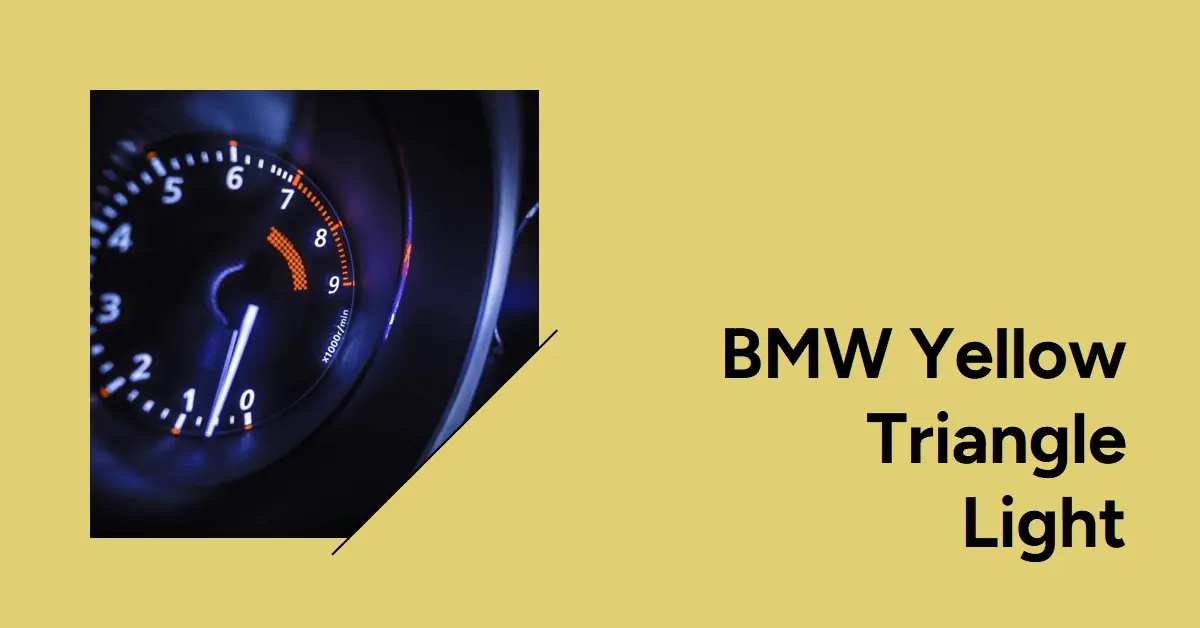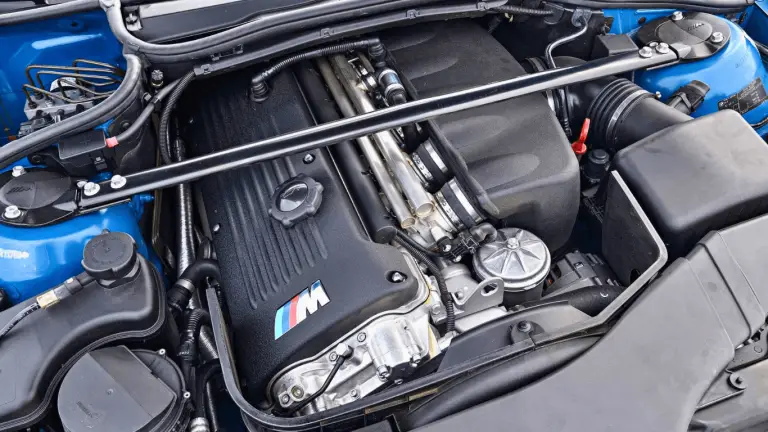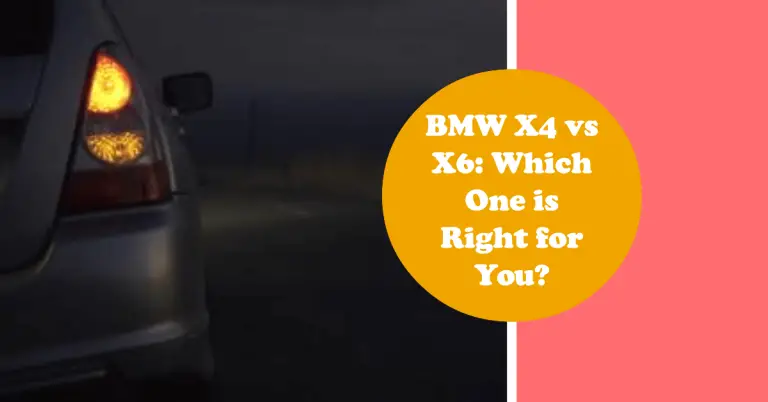BMW Yellow Triangle Light: Meaning and Solutions
That dreaded yellow triangle containing an exclamation point that suddenly appears on your BMW’s dashboard is enough to make any driver’s heart sink. This yellow indicator light means your vehicle is trying to tell you something requires your attention. But what exactly does the yellow triangle light indicate?
The yellow triangle warning light with exclamation point on your BMW signifies a general caution or error has occurred that necessitates action. The light could be warning you about anything from low fluid levels to major drivetrain problems.
Fortunately, the triangle is typically accompanied by additional symbols that specify the exact issue. Understanding these symbols along with diagnostic tips for responding to the yellow triangle warning light will help BMW owners stay calm and take the appropriate action.
In this detailed guide, you’ll learn:
- What triggers the yellow triangle light on your BMW dashboard
- Common symbols and causes tied to the warning
- Smart steps to take when the yellow triangle appears
- How to diagnose and reset the yellow triangle warning light
Gaining confidence in interpreting and reacting to BMW warning lights can ultimately save you money, prevent further damage, and keep you safely on the road. So read on to become a yellow triangle troubleshooting pro!
Decoding the Meaning of the BMW Yellow Triangle
The yellow triangle itself is a general caution symbol that indicates a myriad of possible issues. BMW’s onboard computer system activates the yellow triangle light when it detects a problem or malfunction with your vehicle.
This warning symbol is the checked engine light equivalent for BMW models. While the yellow triangle does not always signify an emergency, it should never be ignored. Diagnosing and addressing the underlying cause is important.
The triangle is often accompanied by a supplementary symbol that specifies the exact warning. For example, you may see it displayed with an engine or thermometer icon indicating an overheating issue versus brake pads to signal worn brake pads.
There are over 100 different warning symbols that could potentially display along with the yellow caution triangle. Checking your BMW owner’s manual is the best way to interpret secondary symbols and their meaning.
Some variations of the yellow triangle warning light include:
- Solid yellow triangle – General error or fault
- Flashing yellow triangle – Severe issue that requires immediate action
- Yellow triangle with ! – Electronic malfunction
In newer BMW models, the triangle may be paired with a message in the instrument cluster that describes the problem e.g. “Engine Overheating Warning”.
Getting to know the most common BMW warning light symbols and causes can help drivers identify and respond promptly to yellow triangle alerts.
Common Causes and Symbols for the BMW Yellow Triangle Light
There are a wide array of issues that can trigger the yellow caution triangle to emerge on your BMW’s dash. Here are some of the most common causes along with the associated symbols:
Low Engine Oil
Symbol – Oil can icon
One of the most frequent reasons behind the yellow triangle is low oil level in the engine. Oil lubricates the moving parts in your engine and keeps it running cool. If the oil gets too low, it can lead to overheating and engine damage over time.
The oil warning will often flash if oil levels fall critically low requiring you to immediately pull over and top up oil. Maintain proper oil change intervals to avoid low oil warnings.
Low Coolant Level
Symbol – Thermometer or radiator icon
Insufficient coolant is another prevalent cause of the BMW yellow triangle and overheating warnings. Coolant absorbs excess heat from the engine and keeps your motor running at optimal temperatures.
Low coolant allows the engine to overheat which can lead to blown head gaskets, cracked cylinders, and complete engine failure if left unaddressed. Top up when coolant runs low and look for leaks.
Brake Pad Wear Sensor
Symbol – Brake pad wearing thin icon
Specialized wear sensors are embedded in your BMW brake pads to detect when they are worn down and need replacement. The triangle will activate when your brake pads reach ~2-3mm in thickness indicating worn pads.
Driving on overly worn pads is unsafe and can damage brake rotors. The yellow triangle is a helpful early warning to replace pads before they fully wear down.
Tire Pressure Monitoring System
Symbol – Tire with exclamation point
BMW’s advanced TPMS technology activates a yellow triangle warning if tire pressure falls 25% lower than the recommended PSI. Underinflated tires wear unevenly, reduce handling, and increase the chances of blowouts.
The light stays on until you correctly inflate the tire to the proper specifications. Check and fill your tires regularly to avoid TPMS warnings.
ABS and DSC Malfunction
Symbol – ABS/ESC error symbols
The cornerstone safety systems in your BMW that regulate braking (ABS) and stability control (DSC) continuously self-monitor for faults. If an issue arises, you’ll see the yellow triangle along with the respective ABS or DSC indicator.
ABS and DSC problems diminish safety and control in emergency braking or slippery conditions. Diagnose the specific sensor or component failure with an OBD scanner and repair promptly.
Transmission Malfunction
Symbol – Transmission error icon
Faults in the automatic or manual gearbox will trigger the yellow triangle light along with a transmission-specific symbol. Transmission issues like low fluid, leaks, clutch wear, electrical faults, or torque converter problems can be indicated.
Harsh shifting, slipping gears, hesitation, or trouble getting into gear are common transmission problems. Address yellow triangle trans warnings immediately before greater damage occurs.
Immobilizer or Security System Error
Symbol – Car with key icon
On modern BMW models, the yellow triangle can signify an issue with the electronic immobilizer anti-theft system that prevents the car from starting without the correct key.
Problems with the key, receiver coils, or computer registration may cause the immobilizer to malfunction and activate the caution light. A repair shop can diagnose and fix immobilizer issues by resetting the system.
Smart Steps to Take When the Yellow Triangle Appears
Seeing the dreaded yellow exclamation point triangle suddenly illuminated on your BMW’s dashboard as you’re driving along can give anyone a jolt of unease.
While the yellow triangle does require attention, there’s no need to panic. Stay calm and take the following smart steps when you notice the yellow caution light:
1. Check for Accompanying Symbols
- The first step is to check for any accompanying symbols displayed next to the yellow triangle, either below, above or to the side. Symbols like an oil can or thermometer provide insight into the cause.
2. Pull Over When Safe
- If the triangle is flashing, it likely signals a critical issue requiring immediate action. Carefully pull over as soon as you can safely get out of traffic.
- If the light is solid, move to the right lane when possible and exit safely to assess the warning.
3. Turn Off and Restart the Engine
- Cycle the ignition off and then back on to see if the yellow triangle and warning symbols disappear after resetting the BMW computer.
- Sometimes warnings may self-clear after resetting. If not, further diagnosis is needed.
4. Check BMW Owner’s Manual
- Your owner’s manual has a comprehensive symbol glossary to help you decode the meaning of secondary symbols shown alongside the yellow triangle.
- Knowing the symbol meaning gives you direction on how best to respond.
5. Scan for Diagnostic Trouble Codes
- Use an OBD2 scanner to pull any diagnostic trouble codes (DTCs) stored in the BMW computer related to the yellow triangle warning.
- DTCs provide details on the specific sensor or component failure.
6. Call Your BMW Service Center
- If the warning light persists after restarting, checking codes, and reviewing the owner’s manual, call your BMW repair shop for assistance.
- Provide any DTCs to help the service center diagnose over the phone.
Following these steps when the yellow triangle first appears can prevent minor issues from escalating into major repairs down the road.
How to Diagnose and Reset the BMW Yellow Triangle Warning
When the yellow triangle warning appears, don’t just mask the light without diagnosing the underlying problem. Here is a systematic process to follow that will help properly diagnose and address the root issue:
Step 1: Identify Any Related Symbols
- Note symbols like oil can, brake, or thermometer displayed alongside the yellow triangle.
- Check your owner’s manual symbol glossary to decode meanings.
Step 2: Inspect Indicated Component or Fluid Level
- If oil, coolant, or brake pad symbols shown, inspect levels and top up if low.
- Visually look for fluid leaks in engine bay, undercarriage, or wheel wells.
Step 3: Retrieve Diagnostic Trouble Codes (DTCs)
- Use an OBDII scanner connected to the 16-pin port below the steering column to pull DTCs.
- Write down or screenshot any code numbers for reference. Common BMW codes include BXXXX, PXXXX.
Step 4: Research and Clear Any False Error Codes
- Look up DTC definitions – some can be known false trip codes that self-resolve like oxygen sensor and emissions codes. Clear these.
- Clear non-critical DTCs and drive to see if yellow triangle resets. If not, further diagnosis needed.
Step 5: Take To Mechanic for Unresolved Sensor or System Failures
- For recurring DTCs related to malfunctioning sensors, ABS, DSC systems, or drivetrain issues have BMW service center fully diagnose.
- Techs can view freeze frame data, perform tests, and pinpoint the faulty component.
Step 6: Reset or Replace BMW Immobilizer Unit
- For immobilizer faults, try disconnecting battery for 15 minutes to reset system. Program key as needed.
- If problem persists, the EWS unit may need replacement – an intricate dealer repair.
Following these diagnostics steps when the yellow triangle appears allows you to proactively resolve the issue before lasting damage or dangerous breakdowns occur.
Is it Safe to Drive With the BMW Triangle Warning Light?
The BMW yellow triangle warning light means your vehicle has detected a fault and driving with the light continuously activated is not recommended. However, the specific accompanying symbols provide clues on the severity of the issue:
Green to Drive
- Low fluid levels – oil, coolant, washer. Top up and monitor.
- Worn brake pads. Schedule pad replacement but still safe in the near term.
- Tire pressure sensor. Inflate tire to proper PSI.
Use Caution
- Check engine light for minor emission or ignition issues. Okay to drive but have repaired.
- Transmission concerns. Go easy on acceleration and have looked at soon.
- Reduced ABS/DSC function. Drive prudently and service ASAP.
Pull Over Immediately
- Flashing red oil warning or temperature symbol – Do not drive! Shut off engine immediately.
- Flashing yellow triangle with transmission error symbol – Serious gearbox issue. Call for tow.
So while the yellow triangle itself does not dictate whether your BMW is safe to drive or needs immediate repair, heed any flashing warnings or severe symbols associated with it. When in doubt, have your trusted BMW service center diagnose urgent yellow triangle warnings.
FAQs About the BMW Yellow Triangle Warning:
Does the yellow triangle light mean my BMW needs towed?
- Not necessarily. The yellow triangle itself does not indicate your BMW is undriveable. Pay attention to any flashing warning lights or symbols like the thermometer or transmission which would warrant immediately pulling over and calling for a tow if they appear.
Will the yellow triangle turn off on its own?
- The yellow triangle warning light will not turn off by itself without fixing the underlying issue. Typically cycling the ignition and restarting the engine also does not clear the light. Diagnosing and repairing the cause of the warning is required to reset the triangle light.
Is it OK to disconnect the BMW triangle light bulb?
- Never disconnect or remove the yellow triangle warning bulb. This disables a key indicator that something in your vehicle requires attention. Fix the root problem prompting the light rather than disabling the messenger.
Can I reset the yellow triangle warning light myself?
- You can potentially reset the yellow triangle by clearing any false error codes with an OBD2 scanner, topping up low fluid levels, or by disconnecting the battery to reset the BMW computer. For recurring sensor failures or complex drivetrain issues have a certified BMW repair shop fully diagnose and reset.
How much does it cost to fix the yellow triangle warning light?
- Costs vary widely based on the specific issue triggering the warning. Simple fixes like topping up oil are under $25 while a transmission warning diagnosis or ABS module replacement can be $1000+. Have the cause clearly determined first, then you can estimate the repair costs.
The BMW yellow triangle of death may fill drivers with dread but arming yourself with knowledge on how to respond and proactively diagnose the cause can turn the warning light from panic-inducing to manageable. Keep the handy tips covered in this article in mind so you can calmly handle that yellow triangle when it inevitably pops up!
Conclusion
While seeing the illumination of the yellow triangle on your BMW’s instrument panel can give any driver pause, understanding the meaning behind this warning symbol and how to properly respond puts you back in the driver’s seat.
Remember that the yellow triangle itself simply indicates an error or caution, while any supplemental symbols explain the specific issue at hand. Top causes include low fluid levels, brake wear, tire pressure drops, system malfunctions, and immobilizer faults.
Stay calm, pull over safely, turn off and restart the engine, cross-reference any symbols with your owner’s manual, scan for codes, and reach out to your BMW repair shop for assistance. Following these steps allows you to proactively diagnose and resolve the problem.
Knowing how to react to that dreaded yellow triangle warning light empowers you to handle problems promptly and may ultimately save you from breakdowns and expensive repairs down the road. With the knowledge from this guide, the meaning behind the yellow triangle will be clear and you can keep racking up happy miles in your Ultimate Driving Machine.







